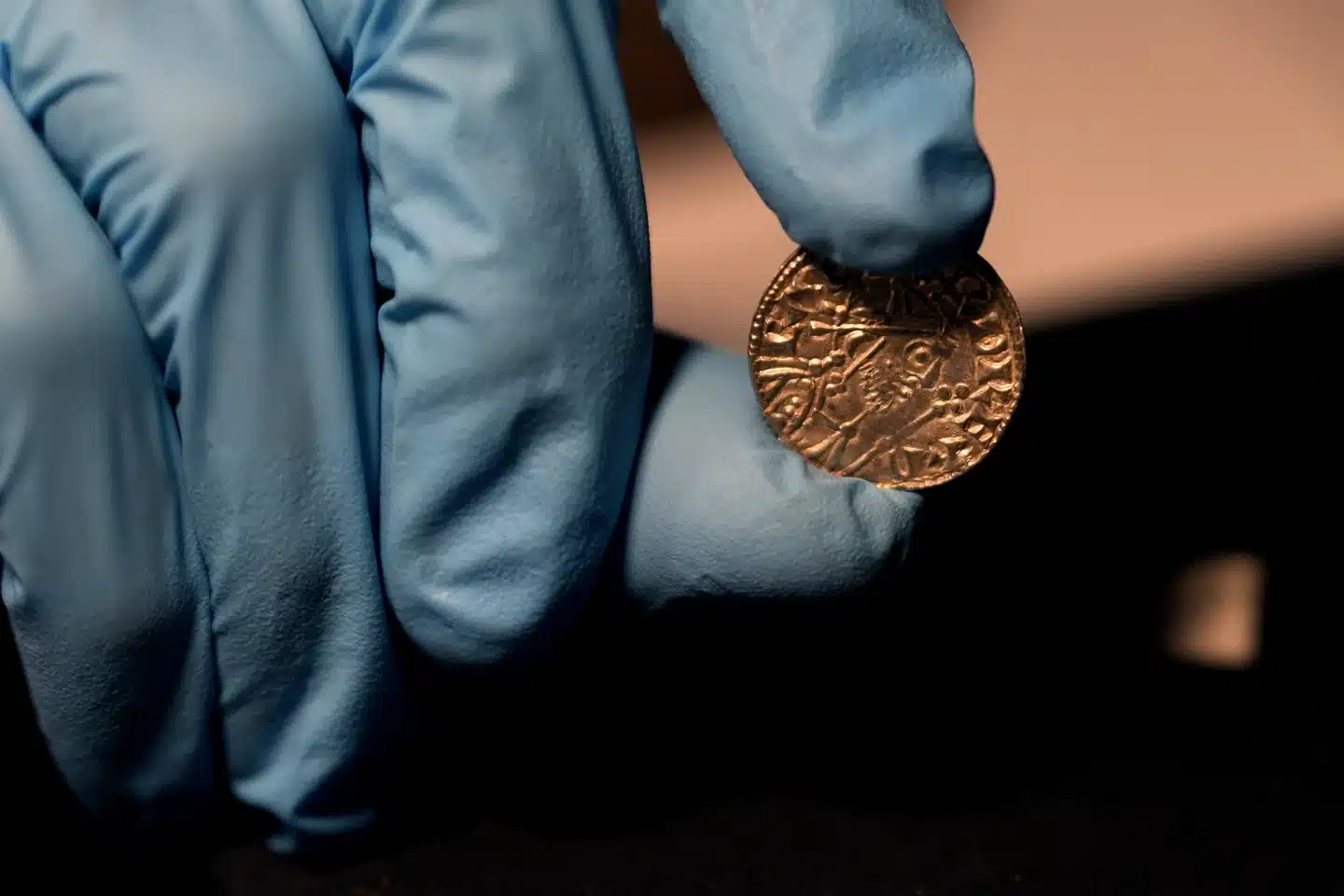LONDON — Adam Staples knew he had found something when his metal detector beeped. And then another. And another.
Soon, “it was just ‘beep beep, beep beep, beep beep,'” Staples explained.
Staples and six companions discovered a trove of almost 2,500 silver coins in a farmer’s field in southwest England, where they had been buried for about 1,000 years. The coins are worth 4.3 million pounds ($5.6 million) and will be housed in a museum, helping to shed light on the stormy aftermath of England’s Norman conquest.
“The first one was a William the Conqueror coin — 1,000 pounds, 1,500 pounds in value,” Staples said Tuesday at the British Museum, where the hoard will be on display in November. “That’s a great find. It is a find-of-the-year type of finding. And then we got another one; we believed there might be five or ten.
“And it just got bigger and bigger,” he added, describing the largest find in his 30 years of exploring the fields and furrows of Britain as an amateur detectorist.
Hoard Of 1,000-Year-Old Coins Unearthed In A Farmer’s Field Sells For $5.6 Million
The cache, discovered in 2019 and just bought by the South West Heritage Trust, included 2,584 silver pennies produced between 1066 and 1068, with some depicting conquering King William I and others his defeated Anglo-Saxon predecessor Harold II.
Michael Lewis, director of the Portable Antiquities Scheme, a government-funded project that records archaeological discoveries made by the public, described it as “one of the most spectacular discoveries” of recent years, particularly because “its story has yet to be fully unraveled.”
Lewis believes the coin hoard will contribute to a better understanding of the most famous date in English history: 1066, when William, Duke of Normandy beat King Harold at the Battle of Hastings, replacing England’s Saxon monarchs with Norman French overlords.
“Most of us are taught about the Norman Conquest of England at school, probably because it was the last time that England was successfully conquered,” according to Lewis. “But it’s a story based on certain myths,” like the idea that the conflict fought “English versus French,” or “good” Saxons against “bad” Normans.
The warring families were connected, and Lewis stated that the hoard “helps us to tell a different story, one that is more nuanced.”
Though the invasion caused a historic schism, the coins in the trove are strikingly similar whether they were produced before or after the conquest. One side depicts a monarch’s head in profile, while the other bears an emblem: an elaborate cross for William and the slightly ironic word “pax” (peace) for Harold.
Amal Khreisheh, curator of archaeology at the South West Heritage Trust, believes the coins were buried for safety as local rebellions against Norman control erupted.
Hoard Of 1,000-Year-Old Coins Unearthed In A Farmer’s Field Sells For $5.6 Million
“We know that the people of Exeter rebelled against William in 1068 and that Harold’s sons, who were in exile in Ireland, came back and started mounting attacks along the River Avon down into Somerset,” she told me. “So it’s probably against that background they were hidden.”
The Chew Valley Hoard, named for the rural location where it was discovered, was purchased for the nation using proceeds from the philanthropic arm of Britain’s national lottery. After touring the British Museum and other museums in the United Kingdom, it will be permanently housed at the Museum of Somerset in Taunton, 130 miles (210 kilometers) southwest of London.
SOURCE | AP









